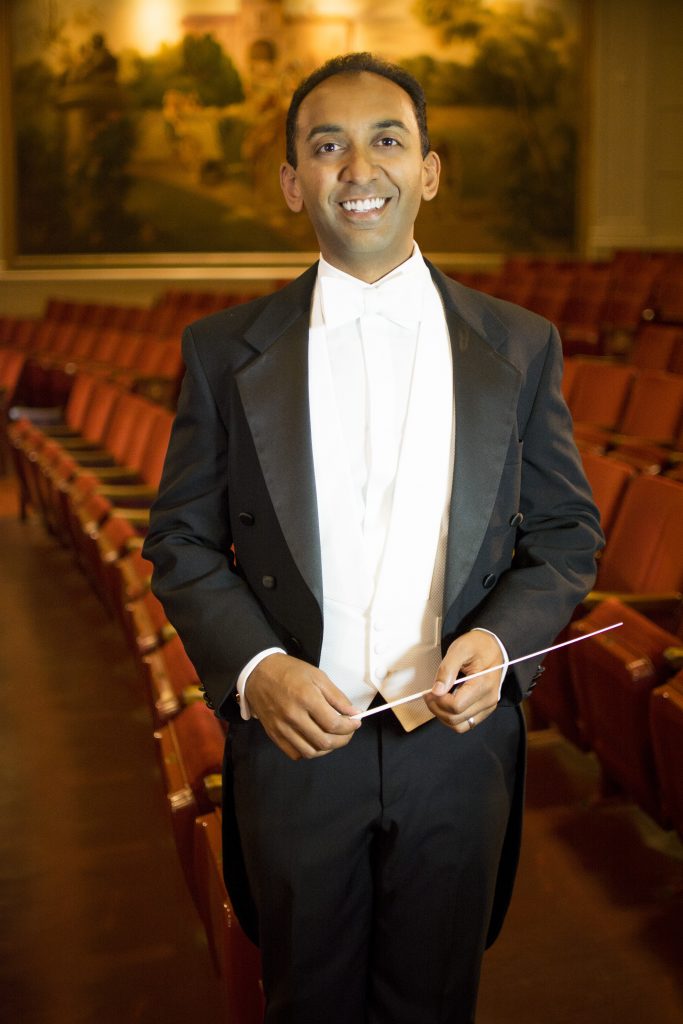Patel Leads a Glorious Sibelius Fifth Symphony to Remember
The orchestra confidently delivered the composer’s expansive, brass burnished themes with the Nordic grandeur they require, especially the final movement’s noble theme that culminates embryonic motifs Sibelius scattered throughout his symphony.
It is certainly true that the estimation of Sibelius’ seven symphonies has fluctuated greatly since his death in 1957. But the demise of doctrinaire serialism and the neo-romantic trends of late 20th century symphonic composition have placed Sibelius’ work in a more favorable light. This San Diego Symphony performance of Sibelius’ Fifth Symphony made a telling case for the emotional impact of the composer’s work, and offered a clearer appreciation of his structural invention.
With Patel and the orchestra, the superb violinist Anne Akiko Meyers performed the world premiere of Adam Schoenberg’s “Orchard in Fog,” a violin concerto by the 37-year-old American composer written for this soloist. Writing a contemporary violin concerto in the shadow of the great violin concertos already ensconced in the repertory is no slight challenge. Even if you limited your list of greats to those composers whose last names begin with “B,” you have a formidable list: Bach, Beethoven, Brahms, Barber, and Berg.
Schoenberg met this challenge with structural innovation: he has cast his first movement as a long, slow—at times eerie—cantilena for violin and orchestra. Unlike the typical concerto, his middle movement is the fast one, an athletic country dance with lots of percussion, including a drum kit. His concluding movement unveils another quiet reverie with an understated coda for solo violin and vibraphone.
For the soloist, Schoenberg’s main challenge is spinning out extended, occasionally sumptuous lines, either helpfully supported by the orchestra in the outer movements or engaged in mildly assertive combat in the frolicking dance movement. Meyers carried out all of her responsibilities with elan, notably unleashing a gleaming upper register that soared over the orchestra with such command and allure.
Although Schoenberg’s orchestration proved quite skillful and his use of percussion refreshingly unconventional—and here I am not referring to the drum kit—I found his harmonic vocabulary more than a tad retro. In the wistful texture of the early part of his first movement, I thought we had fallen back into Samuel Barber’s “Knoxville: Summer of 1915,” and Schoenberg’s final movement evoked the voicing and austere harmonies of Aaron Copland’s ballets of the early 1940s.
The soloist, concerto and composer were well received by the ample Copley Symphony Hall Audience.
Patel opened this concert with Franz Liszt’s popular tone poem “Les Preludes,” which he led with all the panache and flash this piece requires. The orchestra responded with unabashed complicity.
This concert by the San Diego Symphony was given on February 10, 2018, at the Jacobs Music Center in downtown San Diego. It was repeated on Sunday, February 11, in the same venue.

Ken Herman, a classically trained pianist and organist, has covered music for the San Diego Union, the Los Angeles Times’ San Diego Edition, and for sandiego.com. He has won numerous awards, including first place for Live Performance and Opera Reviews in the 2017, the 2018, and the 2019 Excellence in Journalism Awards competition held by the San Diego Press Club. A Chicago native, he came to San Diego to pursue a graduate degree and stayed.Read more…




Following perceptive comments from two readers concerning the David Atherton Sibelius Symphony cycle, which the Symphony archivist omitted in his program article, I revised my first paragraph of this review.